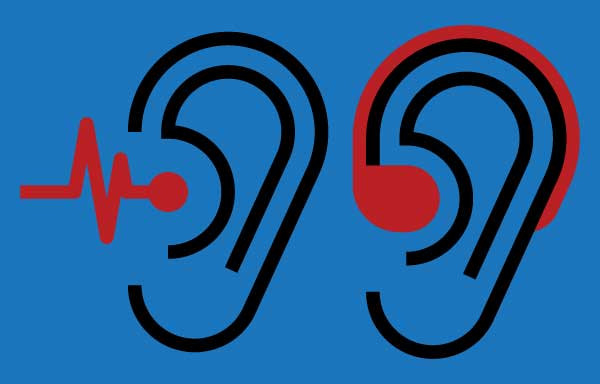
After prostate cancer treatment, a new standard of care for rising PSA

It isn’t often that a study leads to fundamental changes in how cancer patients are treated. But new research is doing just that for some men with prostate cancer that recurs after initial treatment.
Post-treatment recurrence
The first sign of recurrence is typically a rise in blood levels of prostate-specific antigen (PSA). PSA should drop to zero after surgical removal of the prostate, and to near zero after radiation therapy. Prostate cancer cells release PSA, so if the levels rise again after this initial treatment, then new tumors are likely forming in the body. This is called a biochemical recurrence, because the newly developing tumors are still too small to see on traditional imaging scans.
Doctors ordinarily treat biochemical recurrence with hormonal therapies, drugs that prevent the body from making testosterone (a hormone that fuels prostate cancer growth). But results from a large clinical trial show there’s a better approach.
Study methodology and results
During the study, called the EMBARK phase 3 clinical trial, investigators enrolled 1,068 men whose PSA levels had doubled within nine months of initial treatment. When PSA rises that quickly, men are at high risk of rapid cancer progression.
The men were randomly divided into three groups: One was treated with a hormonal therapy called leuprolide, given by injection every 12 weeks. A second group was treated with leuprolide as well as a daily oral dose of enzalutamide, a drug that deflects testosterone from its cell receptor. The third group was treated with daily enzalutamide by itself.
The investigators already knew from earlier studies that enzalutamide delays further progression and lengthens survival for men with metastatic prostate cancer. With this new study, they hypothesized that earlier uses of that drug might have similar benefits for men with biochemical recurrence.
That hypothesis proved correct. The men were followed for just over five years after their treatments were completed. And according to the results, more of the enzalutamide-treated men remained free of worsening cancer. Specifically, 87.5% of men who got the combined treatment — and 80% of men treated with enzalutamide by itself — avoided metastatic cancer, compared to 71.4% of the men who only got leuprolide.
Enzalutamide treatment was also more effective at preventing further PSA increases. In all, 97.4% of men who got the combined therapy and 88.9% of men who got enzalutamide alone avoided PSA progression, compared to 70% of the leuprolide-treated men. If the PSA was less than 0.2 ng per milliliter at 36 weeks, then the men could go off treatment altogether. Far more of the enzalutamide-treated men (up to 90%) went off treatment for durations ranging up to 20 months.
Enzalutamide treatment was well tolerated. The most common side effect was mild to moderate nipple pain and breast enlargement. Most of the men in all three groups are still alive, and EMBARK investigators are following them see if treatment-related differences in survival show up over time.
Observations and comments
Based on EMBARK’s results, Dr. Neal Shore, director of the Carolina Urologic Research Center in Myrtle Beach, South Carolina, and the study’s co-lead author, concluded that enzalutamide treatment “should now be the standard of care for high-risk biochemical recurrence.” Whether enzalutamide treatment should also be combined with leuprolide is a decision that men can make in consultation with a doctor.
An important point is that doctors now have a better way to detect metastatic prostate cancer that wasn’t available when EMBARK was launched. The cancer cells contain high levels of a protein called prostate-membrane specific antigen (PSMA) that shows up on specialized imaging scans. PSMA-based imaging methods can reveal tiny metastatic tumors in the body that weren’t previously visible. In such cases, patients who might once have been diagnosed with biochemical recurrence are now known to have metastatic cancer. And since doctors can now see those tumors, they can treat them directly with surgery or radiation — and potentially achieve a cure.
Still, Dr. Stephen Freedland, an EMBARK lead investigator and urologist at Cedars-Sinai Medical Center in Los Angeles and the Durham VA Medical Center in Durham, North Carolina, says the study’s findings still apply. If PSMA findings are negative even as PSA continues to rise, “then EMBARK shows that systemic treatment [using enzalutamide with or without hormonal therapy] is still the best option,” he says.
If PSMA findings show just a few metastatic tumors (this is called oligometastatic prostate cancer), then those tumors can be treated surgically or with radiation, and possibly with hormonal therapy. And if PSMA reveals widespread metastatic cancer throughout the body, then “metastasis-directed therapy is no longer an option, and hormonal therapy with enzalutamide is the best option to delay progression as shown in EMBARK,” Dr. Freedland says.
This study addresses a very large segment of the treated prostate cancer population — those in whom residual cancer following surgery or radiation therapy persists — and the results are “welcome and surprising,” says Dr. Marc Garnick, the Gorman Brothers Professor of Medicine at Harvard Medical School and Beth Israel Deaconess Medical Center. “Also welcome is the ability of men to go off of therapy if their PSA values were low at the end of 36 weeks of therapy. As pointed out by both Drs. Shore and Freedland, their study adds a significant contribution to this large patient population. The authors should be congratulated on this important contribution.”
About the Author

Charlie Schmidt, Editor, Harvard Medical School Annual Report on Prostate Diseases
Charlie Schmidt is an award-winning freelance science writer based in Portland, Maine. In addition to writing for Harvard Health Publishing, Charlie has written for Science magazine, the Journal of the National Cancer Institute, Environmental Health Perspectives, … See Full Bio View all posts by Charlie Schmidt
About the Reviewer

Marc B. Garnick, MD, Editor in Chief, Harvard Medical School Annual Report on Prostate Diseases; Editorial Advisory Board Member, Harvard Health Publishing
Dr. Marc B. Garnick is an internationally renowned expert in medical oncology and urologic cancer. A clinical professor of medicine at Harvard Medical School, he also maintains an active clinical practice at Beth Israel Deaconess Medical … See Full Bio View all posts by Marc B. Garnick, MD


